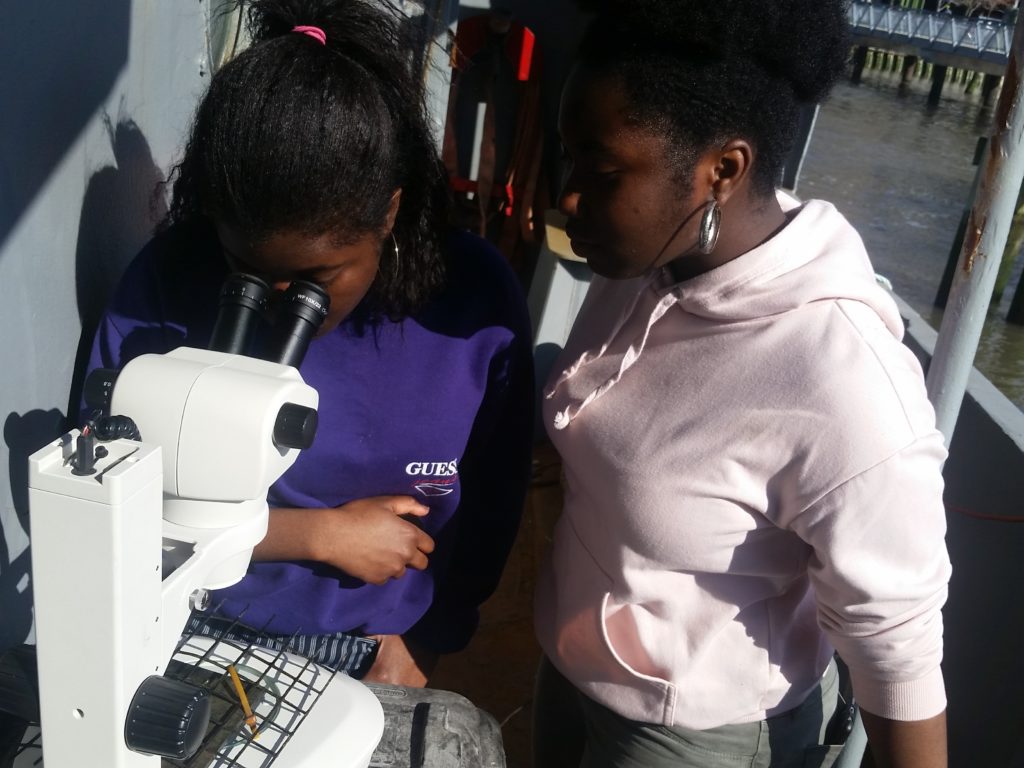
Students: Naomi Moriera, Sharlene Odame, Hallie Robin
Mentor: Rob Frawley
All 2017-2018 Projects
Brief Description: Oysters are filter feeders. Using the Hudson River, interns examined the water chemistry, measured bacteria living in the water and ran tests on microplastic particles and considered how oysters could improve all of these measurements.

Abstract:
For a long time in Harlem, the Hudson River had a large population of oysters cleaning the water. The creatures dubbed “ecosystem engineers” had been filtering out harmful pollutants and clearing up muddy waters until the 1900s when the over- harvesting and overconsumption of oysters in local restaurants depleted the population. This nearly wiped out the colony of oysters in the Hudson River. Most people didn’t realized the significance of the problem until they saw a change in the rivers.
Although oysters are a good meal for dinner, they are also mother nature’s own Brita filter. Without them, natural waterways would be filled with dirt and organic and inorganic particles. Over the course of five months we’ve been conducting experiments, testing pH, nitrate, hardness and turbidity levels to allow us to research oysters and the effects they have on river water.
We collaborated with NYU lab physicist David Grier and his colleagues using their optical technology to assess the size of the particles in our water samples. With their technology we wanted to see if the samples treated with oysters have fewer particles and bacteria compared to the samples with no oysters.
We believe that oysters will serve as an effective way to filter out bacteria and microparticles due to the filtration mechanisms within their body.